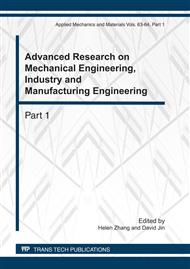p.124
p.129
p.134
p.138
p.142
p.147
p.152
p.156
p.160
Social Community Classification Based on Laplacian Spectrum Feature
Abstract:
Community structure is a common property that exists in social networks. Community structure analysis is important for understanding network structure and analyzing the network characteristics. Recently community detecting methods are reported continually, but within community the structure is still complex. This paper proposed a method applied to classify community by using Laplacian spectrum feature, and defined the distance measure between the features extracted from difference community. As experiments, this paper studied three complex network models: the random graph of Erdös-Rényi, the small world of Watts and Strogatz and the scale-free graph, and classified them based on Laplacian spectrum feature successfully. The result shows the Laplacian spectrum feature and similarity measure are effective for classification.
Info:
Periodical:
Pages:
142-146
Citation:
Online since:
June 2011
Authors:
Price:
Сopyright:
© 2011 Trans Tech Publications Ltd. All Rights Reserved
Share:
Citation:


